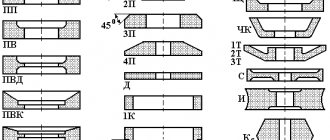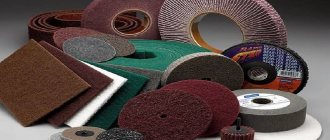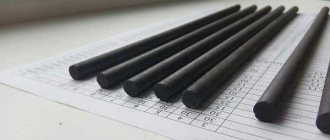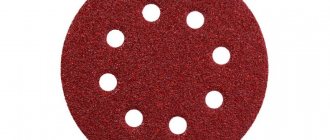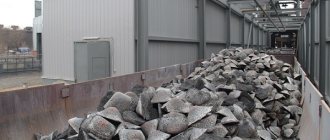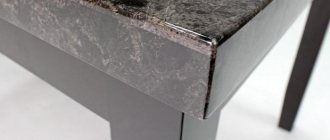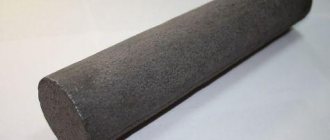Any construction-related activities involve the use of a wide range of tools and materials. In particular, special abrasive materials are used to carry out work on processing objects, for example, grinding. The latter are elements that are widely used for:
- grinding;
- sharpening;
- polishing
The above mentioned activities are not a final list. Abrasive materials also used for other mechanical processes designed to interact with surfaces.
A notable feature of the abrasive process is the impact of multiple microparticles on the surface being treated. Together, they remove the layer step by step, making the surface smooth and most suitable for further construction work.
abrasive materials are , show the types and types, as well as classifications of abrasive materials.
What are abrasives
Abrasives
- these are materials characterized by hardness that is superior to other types of materials (even metals). These are solid small particles used in free or bound form (for example, in the form of some form, fixed on a surface, etc.).
Abrasives are designed for mechanical processing of various materials, removing the thinnest layer from them with sharp protrusions of their particles. In fact, any hard structure has abrasive properties in relation to a less hard one. However, only specific types of abrasive materials are used on an industrial scale.
Spray Tool
As already noted, sand abrasive equipment consists of two main parts: a compressor and an air gun. Combined units include a container for containing powder, a consumable supply hose and nozzle equipment. The base of the body is made of high-strength metal, as are the main elements of the atomizer, and communications for the direction of the working mass are often made of polymer components with rubber. During the operation, abrasive powder under high pressure (about 10-12 atm.) passes along the sleeve and is sprayed through a nozzle onto the target surface. The average particle release speed is 700-750 m/s. The impact of a grain of sand on rust or paintwork contributes to the deformation of a specific point on the surface and inevitably has a cleaning effect.
Abrasive processing of materials
Special abrasive tools are made from abrasives. They, unlike blade (metal) ones, do not have a continuous cutting edge. This function is performed by a solid grain structure, each of the grains is a cutter in it. These abrasive particles are bonded to each other with a binder or combined into some kind of product (it can be a wheel, a stone, sandpaper, a brush), and collectively act on the working surface with their cutting edges, removing the finest chips with them (this layer can be as little as several microns).
Abrasive materials are in demand for different types of processing:
- grinding - can be round, flat, circles, tape, and also preliminary and finishing;
- lapping;
- water jet treatment;
- ultrasonic;
- sandblasting;
- polishing (sometimes preliminary, mirror);
- honing (this is the finishing treatment of internal cylindrical parts, such as automobile cylinders);
- superfinishing (involves minimal material removal);
- tumbling (this is the cleaning of small parts from scale, corrosion, burrs, etc.);
- cutting, cutting;
- sharpening
Price
The price of nickel slag and cooper slag is approximately the same. These powders cost about 3000-3500 rubles per ton. The price of quartz sand ranges from 800-900 rubles per ton. Diamond powder is, of course, very expensive. They sell it not in tons or even kilograms, but in grams. Its cost is 35-70 rubles per gram.
As you can see, abrasive powder is a very useful and in demand material. Its different types can be used both in industry and at home. It does not cause any harm to health, and its performance characteristics are simply remarkable.
Types of abrasives
Abrasive materials differ in different parameters. Thus, they are classified according to their hardness (there are soft, hard, super-hard), their chemical composition, and grain size (they can be large, medium, fine, extra fine).
Based on their origin, abrasives are classified into three types.
1. Natural (or natural) origin. These are sand, garnet, zirconium, etc.
2. Artificial (or synthetic, industrial) origin. These materials are manufactured specifically for abrasive processing. The most common are artificial diamond, silicon carbide, boron, electrocorundum, cubic boron nitrite.
3. Abrasives from production by-products: agricultural residues, slags from metal smelting (for example, nickel slag), from the operation of power plant boilers. These materials are available, have a variety of particle sizes, and are low in cost.
Natural abrasives
Let's look at some of the natural abrasives.
Diamond is the hardest of natural materials, consisting of pure carbon. In nature, it is found, as a rule, in the form of a scattering of crystals. Diamonds can be either jewelry or technical (they are used as abrasives).
Pomegranate
is a mineral consisting of aluminosilicates of lime, magnesia and other impurities. It can be painted in different colors, with the exception of blue. It is used in crushed form: the particles are applied to sandpaper for grinding.
Corundum
consists of crystalline aluminum oxide with impurities, differs in color from bluish to brown. In this case, the hardness of the material decreases with increasing content of iron oxide in it.
Emery
- a mixture of corundum grains with magnesite and other minerals.
Quartz
is silicon oxide in crystalline form. A variety of quartz is flint: it consists of silica and is found in nature in the form of massive rocks.
Pumice
- This is a porous structure of volcanic origin, consisting of silica and alumina.
Chalk
— calcium carbonate, with which fine types of processing (polishing, lapping) are possible.
How it is made
The production of abrasive powder is not a particularly complicated process technologically. Cooper slag from granulated copper smelting slag. They are reduced to a fine-grained state by very rapid cooling with water. The resulting powder is placed on a special inclined grid with small cells to remove various types of unwanted impurities. As a result, small particles of cooper slag fall down. Large ones (limestone, fireproof materials, debris) remain at the top.
Nickel slag is produced using the same technology. The only difference is that in this case nickel slag is used as the feedstock.
Artificial abrasives
The artificial abrasive carborundum was first synthesized in 1891 by scientist-inventor Edward Acheson (USA). Today, there are a lot of abrasives of industrial origin, they are used more widely than natural ones. Let's look at the features of the most common of them.
Electrocorundum is produced by reduction smelting from bauxite in electric furnaces. The color of the abrasive varies from gray to red-brown. The material is used to produce a hard abrasive tool.
Silicon carbide is obtained by reducing silicic acid with carbon. The material is highly brittle and is used in powder form or as a tool for processing glass, porcelain and other fragile structures.
Boron carbide
- the hardest synthetic abrasive, used as a paste for grinding very hard surfaces.
Abrasive liquids
The percentage of solids in different abrasive products can vary significantly. Sometimes they are included in a liquid medium - in this case we are talking about an abrasive liquid. Examples are liquid cleaning products (household chemicals), paints containing quartz sand, sand suspensions, caustic sludge, food products (sugar suspensions, chocolate spreads with pieces of nuts), cosmetology (scrubs, abrasive toothpastes), etc. Of course, not all of them are used for surface treatment. Nevertheless, these media have abrasive properties, which must be taken into account when selecting equipment that works with them.
Read more about pumping abrasive liquids
can be read here:
https://www.arkronix.ru/fluid-types/abrazivnye-zhidkosti/
Comparison of Cooper Slag and Quartz Sand
Of course, modern abrasive powder is more expensive than quartz sand. However, its performance characteristics are much better. For clarity, below we present to your attention a table comparing these two materials.
| Characteristics | Quartz sand | Cooper slag |
| Maximum surface cleanliness of the workpiece | Sa 2 | Sa 3 |
| Sanitary restrictions | May cause silicosis | No restrictions |
| Performance | 6 | 17 |
Properties of abrasive materials
Abrasives have a number of important characteristics, or properties. So, their important parameter is hardness. It is determined by the resistance of the material whose surface is subjected to grinding. Thus, the hardest abrasive material on the Mohs scale (named after the German mineral scientist) is diamond (10 points), boron carbide has 9.5 points, corundum, silicon carbide and electrocorundum - 9, quartz - 8, gypsum - 2, talc - 1 point.
Other properties of abrasives are strength, brittleness, and grain size (this is the size and shape of the grinding grain). Thus, the shape of the grains can be isometric (their height, width, thickness are approximately the same), xiphoid, lamellar - this indicator depends on the nature of the abrasive material and the degree of grinding of the original grain.
The abrasive ability of these substances (that is, their performance qualities) is determined by the mass of the layer of material removed during grinding.
Abrasives have the property of self-sharpening: they remain operational due to the formation of new protrusions, cutting edges near the grains during processing.
Application of abrasives
People have used abrasives since ancient times. For example, the Mayans in the 9th century. BC e. They decorated their teeth with precious stones, and they drilled holes in them with tubes onto which crushed quartz was applied.
Today, the scope of application of abrasive materials is very wide.
For example, they are indispensable in metal and woodworking, construction. Abrasives are also used in everyday life. So, in every home there is sandpaper, pumice, and nail files (they are also covered with very fine polishing particles). #FORM#
Reviews of powder manufacturers
Many Russian enterprises are developing sandblasting equipment and powder consumables for it. In particular, users respond positively to the product, noting the high-quality drying of the material, the absence of an oily factory film and foreign odors. High-quality nickel and cooper slag can be purchased from. Customers indicate that this manufacturer offers a special abrasive powder for concrete, metal and stone building structures that can be used several times with the same effectiveness. Consumers and products from Ryazan Instrumental, Inf-Abraziv, etc. are highly appreciated.
